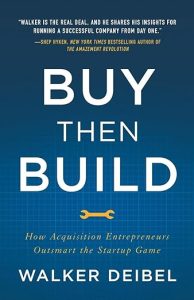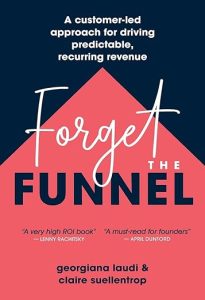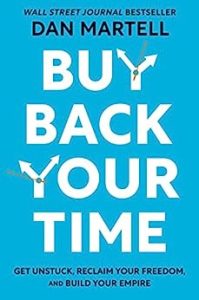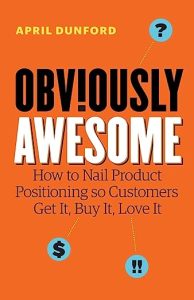Buy then build is a great book for anyone thinking of starting or running their own business. The author’s first two chapters layout a compelling case why it makes more sense to buy an existing business with established customers and proven revenue than starting from an idea.
The reason why businesses fail is often talked about and Walker Deibel suggests you can shortcut that pain and heartache buy buying a business.
I really enjoyed reading this book because it confirmed a lot of information I already knew. However it laid out the concepts in a very logical and concise way. If you are thinking of buying a business – read this book.
The CEO Mindset
After convincing everyone to start their own business, Deibel suggests you understand what type of CEO you would be. This concept is referenced in nearly every chapter of the book.
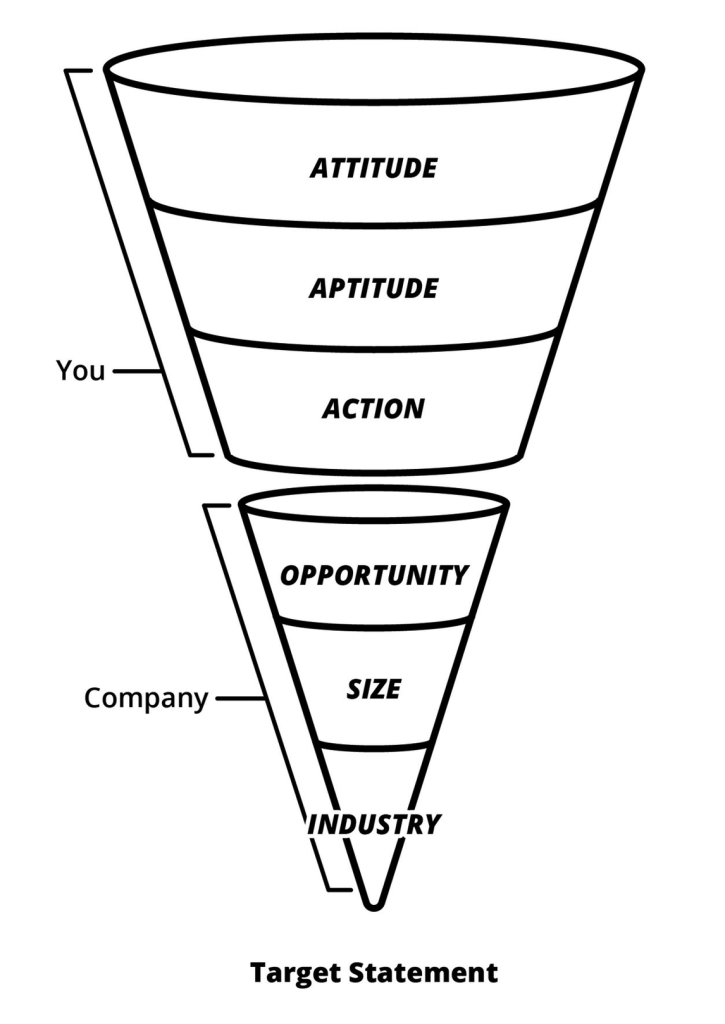
Attitude
Look at the list below. These include some of the most recognized character traits of successful CEOs in companies between $1 and $20 million in revenue. A few of them seem like they would be characteristics of strong entrepreneurs, but they actually are not. As you read through it, consider how strongly you see each attribute in yourself and what traits might be missing. Also, consider what might be missing from the list.
- Strategic-thinking skills
- Interpersonal skills
- Intellectual ability
- Industry experience
- Ability to deal with ambiguity
- Tenacity
- Organized
- Laser-focused
- Achievement-oriented
- Thick-skinned
- Risk tolerant
- Self-confident
- Creative
- Optimistic
- Assertive
- Decisive
- Methodical
- Perfectionistic
Attitude
Successful entrepreneurs all have something in common. One of the most tremendous predictors of long-term success is having a growth mindset.
a growth mindset is one that views the world as more malleable, believing success is achieved through effort. A growth mindset is the little difference that empowers people to have a sense of free will. They embrace rather than avoid challenge, and they persist during times of setback. A growth mindset views effort as the path to mastery. They learn from criticism and are inspired by the success of others. Hard work, good strategies, and input from others are the tools utilized by those who believe their talents can be developed. They put their energy into learning.
“Aptitude is made up of both raw intelligence and competencies. These are your skillsets—your strengths and weaknesses.”pg. 50
Above all, strategic thinking, persistence, assertiveness, and being achievement-oriented, optimistic, and thick-skinned are the attributes most shared by successful entrepreneurs.
Action
Imagine your perfect work day. What are you doing with your time? What drives you?

Every potential acquisition worth being considered comes with a built-in opportunity. You need to know whether you are growth-oriented or operationally oriented. Moreover, you need to acquire a business where the execution of the opportunity for increasing value matches not only your skillset but aligns with your vision of what you want to do on a daily basis.
Defining The Target
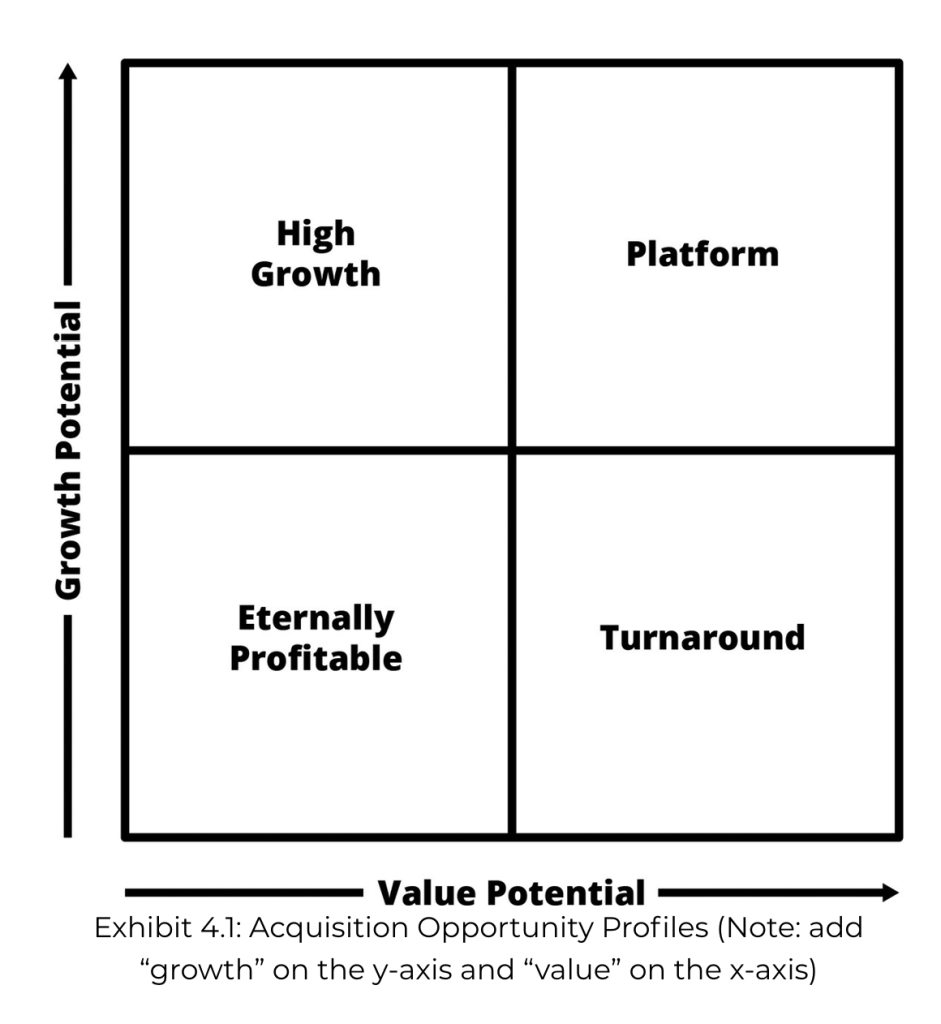
If you are an operational expert, you may wish to find an opportunity with solid marketing efforts in place, but that lacks efficiency in processes and has obviously needed areas of improvement in quality assurance. You’re obviously looking for something where you can roll your sleeves up and start improving the company from the bottom line up. Or, if you are an online marketing expert, there are plenty of well-established companies out there that sell products successfully through traditional channels that have, so far, ignored online sales efforts. This could be a perfect fit for your skillset.
Buy Then Build by Walker Deibel is a practical guide for aspiring entrepreneurs looking to acquire and grow existing businesses instead of starting from scratch. Deibel presents acquisition entrepreneurship as a more predictable and scalable way to build a business, especially compared to traditional startups, which often face high failure rates.
Key Concepts:
- Acquisition Entrepreneurship: Deibel argues that buying an established business offers a better risk-reward ratio than starting a new venture. He highlights that acquisition entrepreneurship allows for leveraging existing infrastructure, cash flow, and customer base, reducing the risks associated with startups.
- Why Buy Instead of Build: The book emphasizes that the majority of startups fail because they have to go through various phases of ideation, development, and market validation before achieving profitability. Buying an established business eliminates these early challenges, providing the buyer with a proven business model, revenue streams, and often, established staff and systems.
- The Search Process: Deibel outlines the process of searching for the right business to buy. He introduces the concept of “search funds,” which are vehicles entrepreneurs can use to raise capital for acquiring businesses. He also discusses how to evaluate businesses, key financial metrics, and how to identify undervalued opportunities.
- Due Diligence and Deal Structuring: A crucial part of the acquisition process is conducting due diligence to understand the financial health, risks, and opportunities of the business. Deibel provides strategies for evaluating the business’s performance, reviewing contracts, analyzing customers, and assessing the management team. He also covers various financing options and deal structures, such as seller financing, earn-outs, and leveraging Small Business Administration (SBA) loans.
- Post-Acquisition Growth: Once a business is acquired, the focus shifts to growth. Deibel discusses how to implement strategic changes, improve operational efficiency, and grow revenue. He emphasizes the importance of leadership and innovation, encouraging buyers to think about long-term value creation rather than just maintaining the status quo.
- Building Value: The ultimate goal of buying a business is to grow it and eventually sell it at a profit. Deibel advises entrepreneurs on how to increase the value of their acquisitions through operational improvements, strategic marketing, and expanding into new markets. He encourages thinking like a private equity investor, with a focus on maximizing return on investment.
- Case Studies and Personal Experiences: Throughout the book, Deibel shares his personal journey as an acquisition entrepreneur, along with various case studies of successful business acquisitions. These real-world examples provide practical insights into how to approach different challenges, negotiate deals, and avoid common pitfalls.
Conclusion:
In Buy Then Build, Deibel provides a compelling argument for acquisition entrepreneurship as a faster, safer, and more reliable path to business ownership and success. The book is filled with actionable strategies and tools for those looking to bypass the high-risk startup phase and build a thriving business through acquisition. Whether you’re a first-time buyer or an experienced entrepreneur, Buy Then Build offers a comprehensive roadmap for leveraging acquisitions to create long-term wealth.
Join The Newsletter
Get occasional emails from me when I publish new projects and articles.
